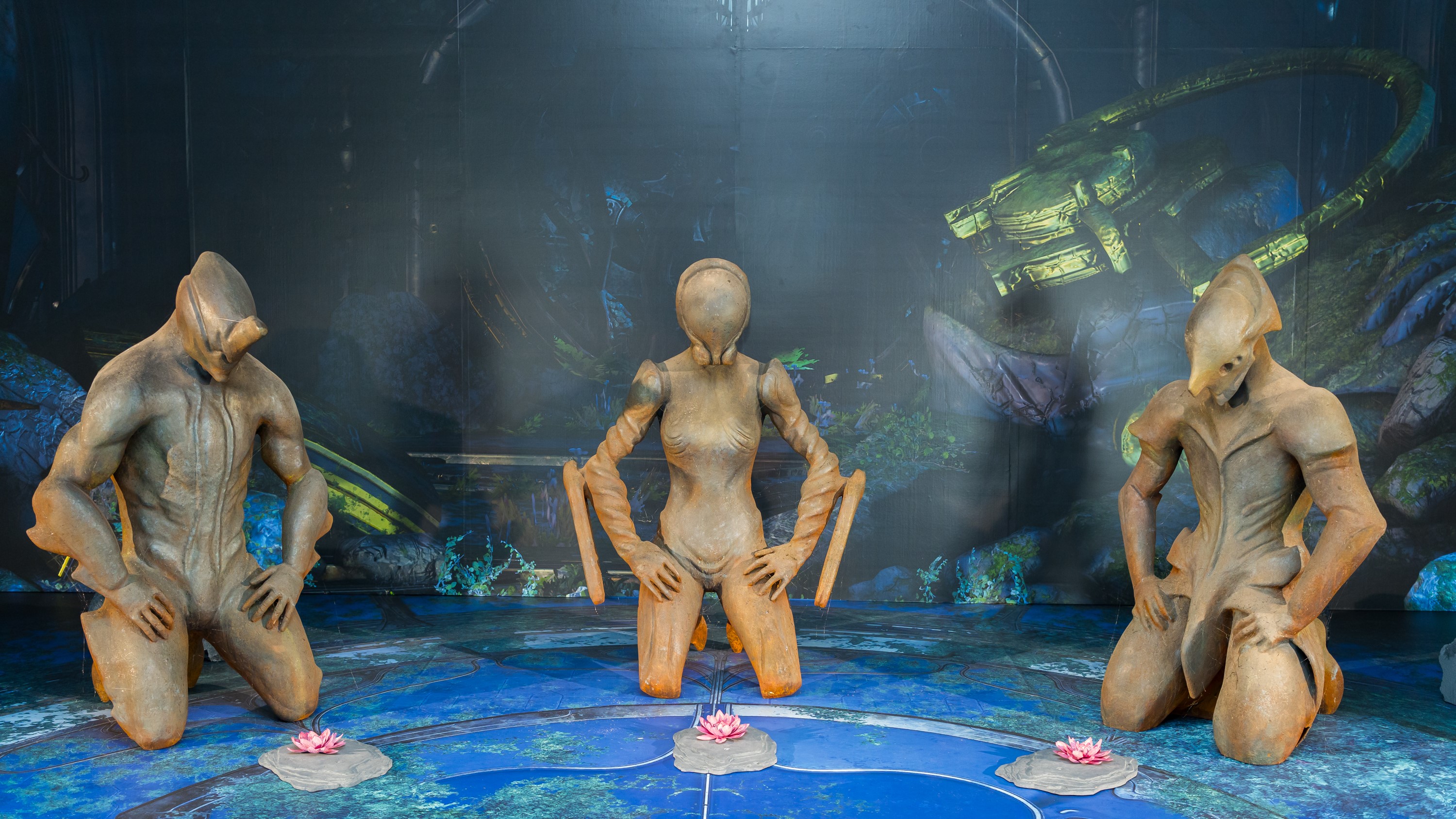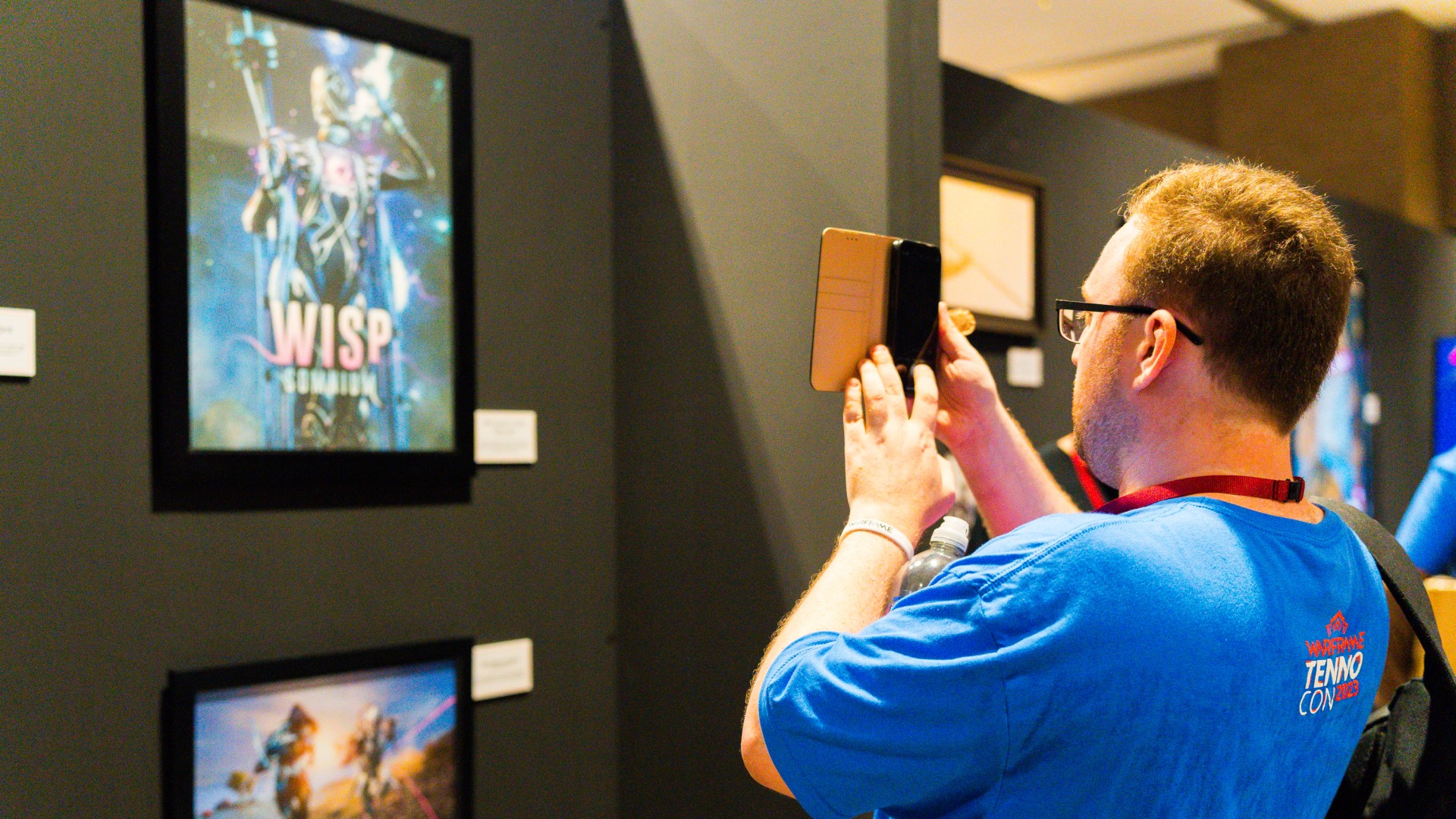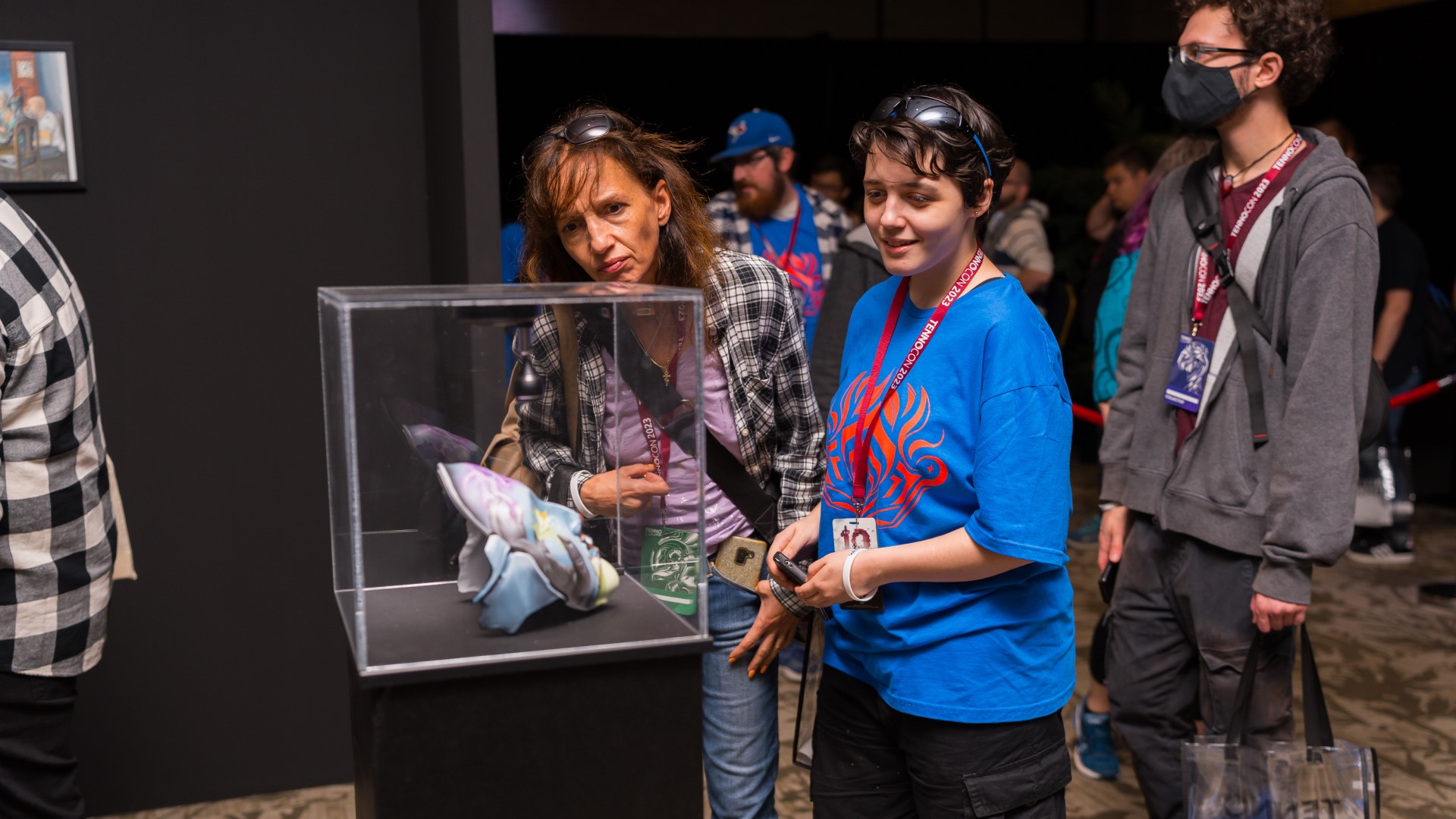Warframe’s community art museum celebrates a decade of shared experiences
Arts and crafts

Warframe’s annual convention in London, Canada was a sight to behold. Packed with fans of all shapes and sizes, the event known as Tennocon boasted a joyful atmosphere. However, 2023’s installment offered something new: a community art gallery dedicated to the game’s 10-year history, showcasing fan-made props and art.
Speaking with TRG, senior events manager Beth Bryson shone more light on how this beautiful exhibit came to be. “I worked very closely with our community team members, because [they] have their finger on the pulse”, said Bryson as she gave a tour of the displays.
However, Bryson wanted the exhibit to be more than just a slapdash collection of art and props: “I was very very passionate about creating a space that felt very polished and presentational.” She said that it was crucial that the exhibit featured “not only the work that our devs have done over the years” but ensured that there was enough “community-created art” to fill “the back half of the museum”.
Expertly replicated weapons and armor from Warframe’s history were set alongside the game’s early concept art
On entering the museum, it became clear that Bryson had more than achieved her goal. The pieces were lovingly displayed, each with nearby information boards to help explain exactly what you were looking at. Expertly replicated weapons and armor from Warframe’s history set alongside the game’s early concept art were present for example - but the props weren’t always official creations from the developers at Digital Extremes. More often than not, they were fan creations, given pride of place alongside official works, all to highlight the organic give and take between MMO developers and their communities that helps to give such games life.
A sight for sore eyes

The pieces themselves ranged from the fascinating to the downright breathtaking. One particular painting depicted the development team in the guise of warframes, posed in the manner of a cheesy 1980s family photo - complete with uncomfortable-looking sweaters. Other paintings saw key moments from Warframe’s story immortalized in watercolor and acrylic - gorgeous splashes of color against the black backdrop of the museum walls.
My personal favorite, however, came in the form of a piece by Karu, a fan artist from the Czech Republic. The piece depicted a collage of anthropomorphized warframes, each capturing the diversity and feel of their in-game counterpart. This Humanframe series is a staple of the Warframe fandom, earning its own story on the game’s community site back in 2019.

However, seeing Humanframe in person was something else altogether. Not only were the vibrant colors and skillful use of contrast absolutely captivating in the flesh, but it was also a treat to see Humanframe arrayed as part of the wider range of community art on offer. It’s one thing to see a great piece of fan art, but another to see it amongst its peers, and as part of a thoughtful tour of the range of creativity in the Warframe fandom.
Sign up for breaking news, reviews, opinion, top tech deals, and more.
Impressively, the museum was also sufficiently broad and ambitious that Warframe fans of all stripes could find a piece that resonated with them. Bryson, for instance, was very happy to see a nod to her favorite Warframe on display in the museum: “There are two pieces of Styanax in there that are absolutely stunning that I love… there’s something special about looking [at them].”
Building a history

Perhaps the most significant takeaway from Tennocon’s museum is how important community contributions are in building the foundations of any MMO community. Games like critically acclaimed MMO Final Fantasy 14 and World of Warcraft are only what they are today thanks to the organic communities that they’ve been able to foster.
As video games have continued to entrench their position as part of mainstream popular culture, we’ve seen a turn toward the academic curation of the medium. The British Science Museum, for instance, recently opened an exhibit called Power Up, which offers an interactive history of video games complete with 160 consoles for attendees to play, and the Victoria & Albert Museum had a major exhibition in 2019 exploring the design and culture of contemporary video games. In the U.S., the Smithsonian famously made waves in the mists of 2012, too, with its The Art of Video Games exhibition, which I was lucky enough to attend back in the day.
We’ve seen a turn toward the academic curation of video games in recent years
However, as marvelous as these sorts of exhibits might be, they often neglect the fan communities that underpin the successes of many of the best single-player games and best multiplayer games specifically. Tennocon’s museum stands as an example of a more specific kind of video game history tailored towards the trials and tribulations of a specific community - an offering that shows art not as something that is fired into a vacuum, but as the product of a dialogue between creator and audience.
Digital Extremes made a special effort for this year’s Tennocon, marking a more sensitive approach to their video game’s cultural impact that rightly took the time to honor not only those who make the games but also those who play them.
Looking for more great communities in video games? Check out our lists of the best MMO games and best co-op games.

An editor and freelance journalist, Cat Bussell has been writing about video games for more than four years and, frankly, she’s developed a taste for it. As seen on TechRadar, Technopedia, The Gamer, Wargamer, and SUPERJUMP, Cat’s reviews, features, and guides are lovingly curated for your reading pleasure.
A Cambridge graduate, recovering bartender, and Cloud Strife enjoyer, Cat’s foremost mission is to bring you the best coverage she can, whether that’s through helpful guides, even-handed reviews, or thought-provoking features. She’s interviewed indie darlings, triple-A greats, and legendary voice actors, all to help you get closer to the action. When she’s not writing, Cat can be found sticking her neck into a fresh RPG or running yet another Dungeons & Dragons game.